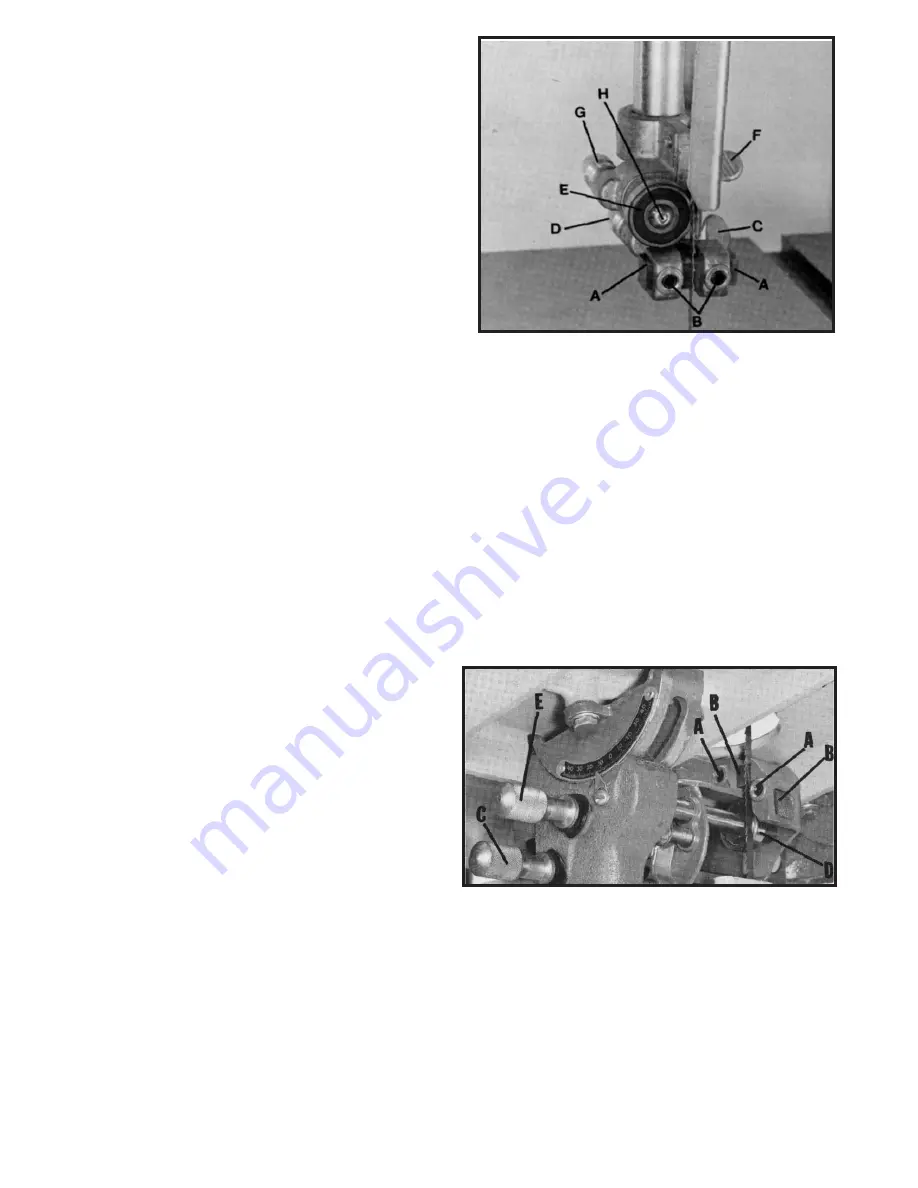
10
ADJUSTING UPPER BLADE GUIDES
AND BLADE SUPPORT BEARING
The upper blade guides and blade support bearings are ad-
justed only after the blade is tensioned and tracking properly.
To adjust proceed as follows:
1. The upper blade guides (A) Fig. 23, are held in place by
means of the set screws (B). Loosen the set screws (B) to
move the guides (A) as close as possible to the side of the
blade, being careful not to pinch the blade. Then tighten the
screws (B).
2. The guides (A) Fig. 23, should then be adjusted so that the
front edge of the guides are just behind the “gullets” of the saw
teeth. The complete guide block bracket can be moved in or
out by loosening thumb screw (C) and turning knurled knob (D)
Fig. 23. When guides (A) are set properly, tighten thumb
screw (C).
3. The upper blade support bearing (E) Fig. 23, prevents the
blade from being pushed too far to the back which could
damage the set in the saw teeth. The support bearing (E)
should be set 1/64 behind the blade by loosening thumb
screw (F) and turning knurled knob (G) to move the support
bearing (E) in or out.
4. The blade support bearing (E) should also be adjusted so
the back edge of the blade overlaps the outside diameter of
the ball bearing by about 1/16 . The bearing (E) is set on an
eccentric and to change position remove screw (H) and bear-
ing (E) Fig. 23. Loosen thumb screw (F), back out screw (G)
and re-position shaft that bearing (E) is attached to.
ADJUSTING LOWER BLADE GUIDES
AND BLADE SUPPORT BEARING
The lower blade guides and blade support bearing should be
adjusted at the same time as the upper guides and bearing as
follows:
1. Loosen the two screws (A) Fig. 24, and move the guides (B)
as close as possible to the side of the blade, being careful not
to pinch the blade. Then tighten screws (A).
2. The front edge of the guide blocks (B) should be adjusted
so they are just behind the “gullets” of the saw teeth by turn-
ing the knurled knob (C) Fig. 24.
3. The lower blade support bearing (D) Fig. 24, should be
adjusted so it is about 1/64 behind the back of the blade by
turning the knurled knob (E).
Fig. 23
Fig. 24













